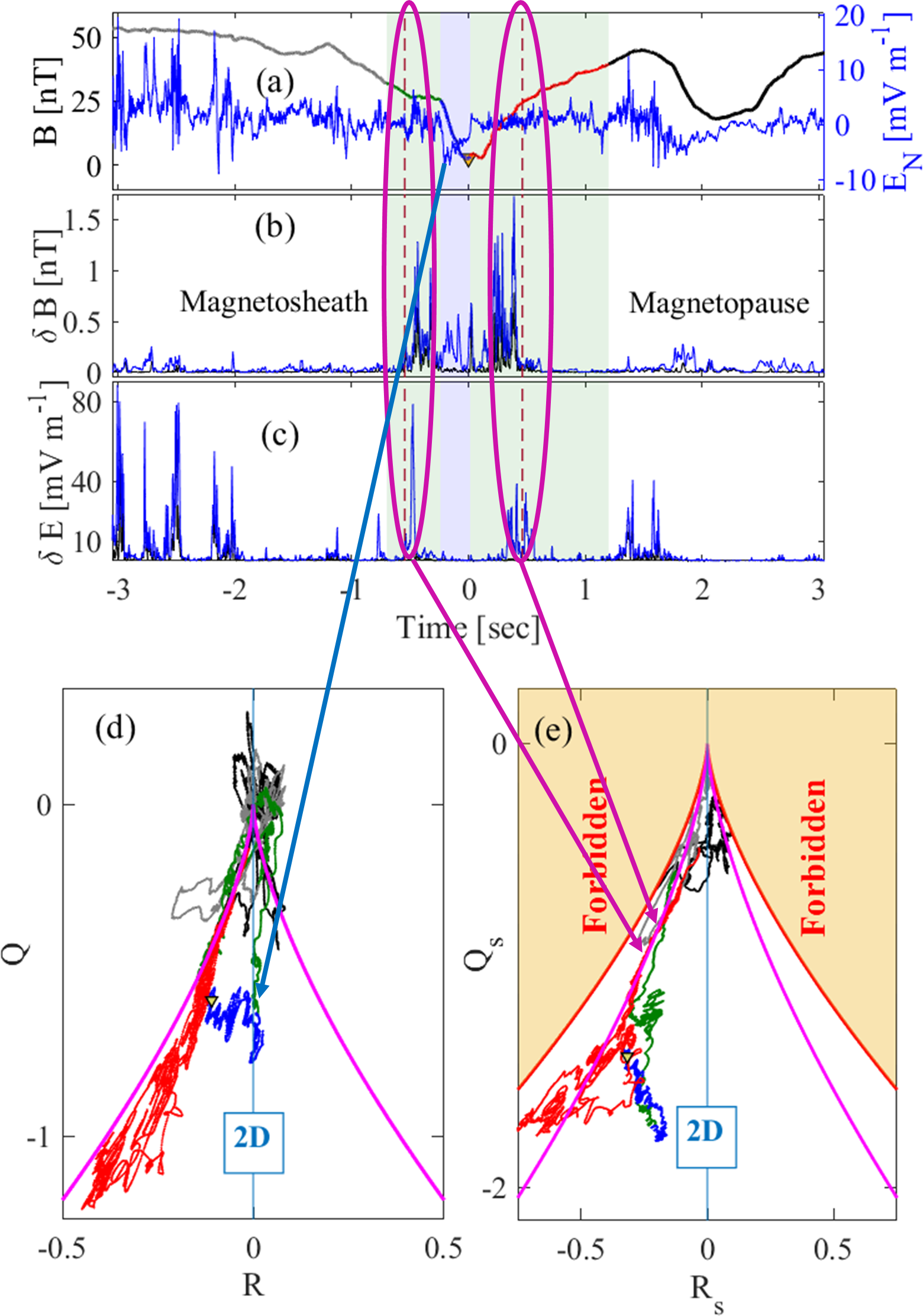MIST
Magnetosphere, Ionosphere and Solar-Terrestrial
Topology of turbulence within collisionless plasma reconnection
Bogdan Hnat (University of Warwick)
Collisionless magnetic reconnection [1] and plasma turbulence [2] are fundamental mechanisms that transfer energy across scales and between electromagnetic fields and particles. Stretched turbulent vortices and thin reconnection current sheets are prime sites of plasma heating and particle acceleration. Magnetic field line topology is central to both these processes.
We have classified the magnetic field topology observed as the four MMS spacecraft fly through a well resolved reconnection site. The MMS spacecraft separation defines a spatial 'yardstick', which is of order of the ion inertial range di, for sampling magnetic field topology. However, spatial variation of the topology is indirectly captured on a much finer spatial scale due to high time resolution of the magnetic field measurements, 8192 samples per second.
We find two distinct types of the magnetic field line topology near and at the electron dissipation region (EDR). At the edges of the EDR turbulent-like topology, identical to the topology of stretched vortices in hydrodynamic turbulence, is dominant. It coincides with large high-frequency electromagnetic perturbations. At the EDR the topology departs from turbulence and the structures appear to be two-dimensional, coinciding with suppression of electromagnetic fluctuations. The topology of the magnetic field line directly orders electron acceleration and heating. Suprathermal electrons are absent where turbulent-like topology dominates, but the bulk electron temperature anisotropy is enhanced. Reduced two-dimensional topology at the EDR coincides with the suprathermal electrons. The turbulent-like topology can arise in EMHD in scales smaller than electron inertial scale when vorticity dominates the dynamics. We find that vorticity is indeed dominant at all times within our interval.

References:
[1] J. Birn, E.R. Priest, Reconnection of Magnetic Fields: Magnetohydrodynamics and Collisionless Theory and Observations (Cambridge University Press, New York, 2007).
[2] Matthaeus, W.H. and Velli, M.,Space Science Reviews, 160(1), pp.145-168 (2011).
See publication for further information:
Hnat, Bogdan, Sandra Chapman, and Nicholas Watkins. "Topology of turbulence within collisionless plasma reconnection." Scientific Reports 13.1 (2023): 18665.